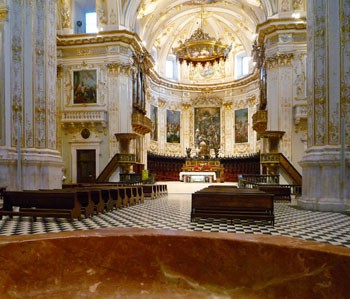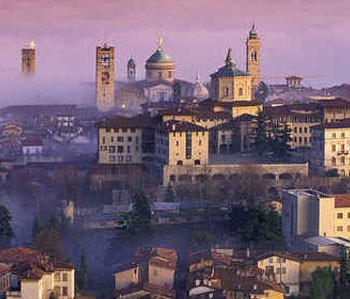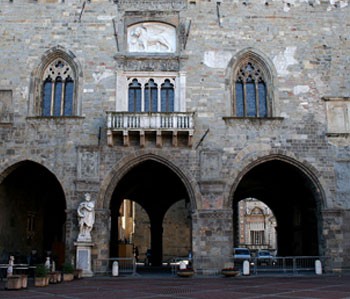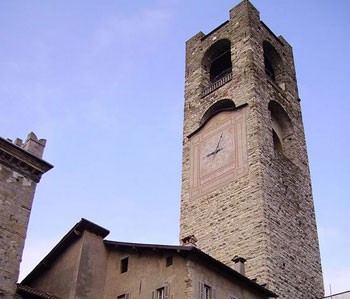SIGHTSEEING IN BERGAMO AND THE SURROUNDING AREA
Bergamo is often remembered for its industry, while its endless cultural attractions and historical and artistic charms are forgotten. The Hotel Città Dei Mille is located at the centre of everything that may interest visitors. Bergamo conserves an unmissable historical, cultural and music heritage. Here’s a list of suggestions for sightseeing in Bergamo and the surrounding area.

BERGAMO CATHEDRAL
It is age-old just like all of Città Alta. The primitive structure was erected between the 5th and 6th century.
It was initially dedicated to Saint Vincent. Some pictorial and sculptural evidence of this is conserved in the Diocesan Museum. The excavations which revealed the church’s foundations brought to the light two adjacent Roman domus, highlighting the fact that the area was lived in back in Roman times. In 1689, the church was definitively consecrated to Saint Alexander, patron saint of the city. The Duomo is famous for its wealth of decor but also for its “treasure” of chalices, monstrances, altar fronts and very precious shrines. One of these is the tiara of Pope John the 23rd. The precious papal headpiece was realized in 1958 by sculptor Attilio Nani. The materials used show the absolute prestige of the composition: gold, pearls, rubies, diamonds, emeralds on silver mesh.

BERGAMO ALTA
Its origins seem to date back to the 5th century B.C. For certain, the most important period for its development dates back to the Roman conquest around 200 B.C. which was followed by centuries of prosperity. In 290 A.D., the first Christians appeared along with the Theban Legion soldier that was martyred in Bergamo becoming its patron: Saint Alexander. One of the fundamental moments of the town was the Venetian domination which is still recalled by the city walls (whose construction began in 1561). Bergamo marks the boundary with the Duchy of Milan and was consequently in a strategic position for Venice on the trading routes which connected it with Graubünden via the Brembana Valley.
The last, but by no means the least important historical period for the town, is the title of “Città Dei Mille” which it was awarded because it was the province which contributed the highest number of men for the Italian unification campaign. In 1859, Giuseppe Garibaldi came through the Saint Laurence City Gate promising the end of the Austrian domination.

PALAZZO DELLA RAGIONE
Piazza Vecchia is most definitely the meeting place for Bergamo’s people. The square is dominated by the stunning Palazzo della Ragione. This building was constructed in the 12th century and was probably very different from how we see it today. The arches date back to the 1400s. They were open to allow for passage and to illuminate the portico. In the 1500s, a fire destroyed the roof and the first floor. Architect Pietro Isabello was summoned for its restoration which resulted in new windows and portico. In the 1600s, the new city hall was constructed on the opposite side of the square. It would later become the public library.
A winged white marble lion stands out at the centre of Palazzo della Ragione’s facade. It was a gift from Venice recalling the age-old tie between the two cities.

THE BIG BELL
It seems to date back to the 12th century. It was constructed by the Suardi family.
Although its name is the Torre Civica (the City Tower) since its ownership was passed over to the Municipality of Bergamo, the people of Bergamo call it “the big bell” because for centuries it has housed the great bell which has accompanied the city through the ages, chiming out to summon the townsfolk for public meetings or to warn them of arriving enemies. The big bell continues to chime 180 times today as in old times when it would call the people outwith the city walls to come back before the city gates would be completely closed.
“Climbing” the 30 meters high tower is a truly fascinating experience thanks to the glass lift which reaches the high part of the tower. You may admire an unequalled view of Città Alta from the top.

